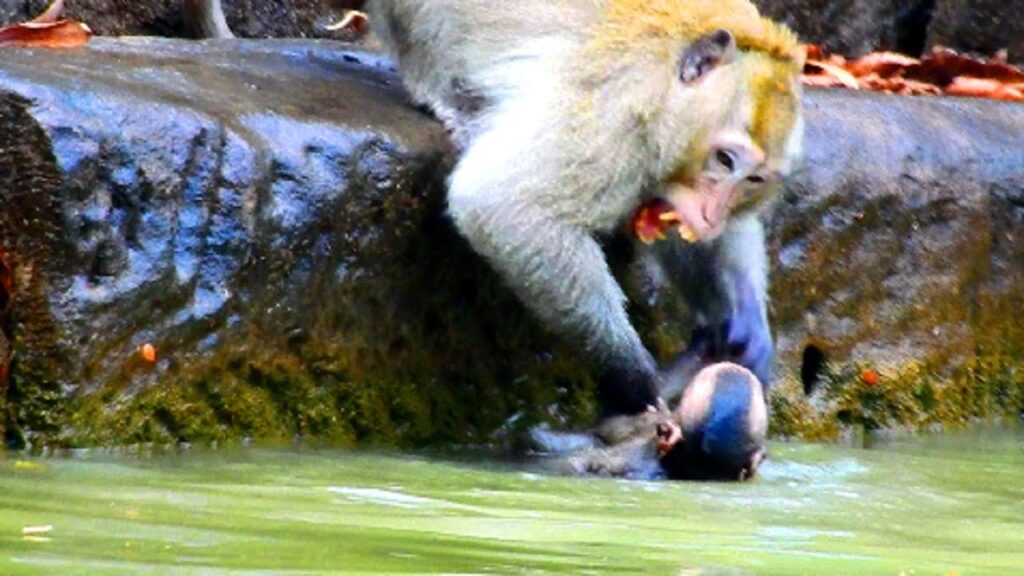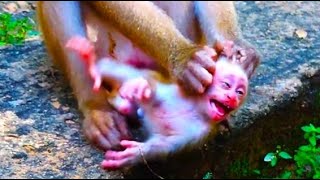
In many monkey families, what looks like “fighting” or “not allowing” a little monkey to swim is often a form of natural protection and teaching. Adult monkeys—especially mothers, aunts, and older siblings—are extremely cautious when a young infant approaches anything risky, and water is one of the biggest dangers in their environment. Even if the water looks calm or shallow to humans, to a tiny baby monkey it can be frightening, cold, slippery, and unpredictable. Adults know this from experience, so their reactions can appear rough, fast, or overly strict.
In this scene, the little monkey might have wandered toward the pool with curiosity, splashing with its hands or trying to step inside. The older monkeys, seeing the danger, quickly interfered. Their movements—pulling, grabbing, blocking, or even giving a mild nip—are all forms of discipline and protection. To us, it may look like aggression, but to them it’s communication: “Stay close,” “Don’t go there,” or “You’re not ready yet.”
Monkey groups work like families, and every member has a role. Adults share the responsibility of keeping youngsters safe. Since young monkeys don’t yet understand depth, movement of water, or how quickly they can get into trouble, the adults react immediately to prevent accidents. Some baby monkeys have weaker coordination, making swimming extra risky. So, instead of allowing the little one to enter the pool freely, they insist that it stays on solid ground until it grows stronger and more confident.
What seems like unfair behavior is actually caregiving in disguise. The adults’ firm actions ensure that the baby learns boundaries and stays safe. Over time, as the little monkey grows, gains balance, and learns by watching others, the adults will allow it to explore water more confidently—but only when they know it can handle it.


